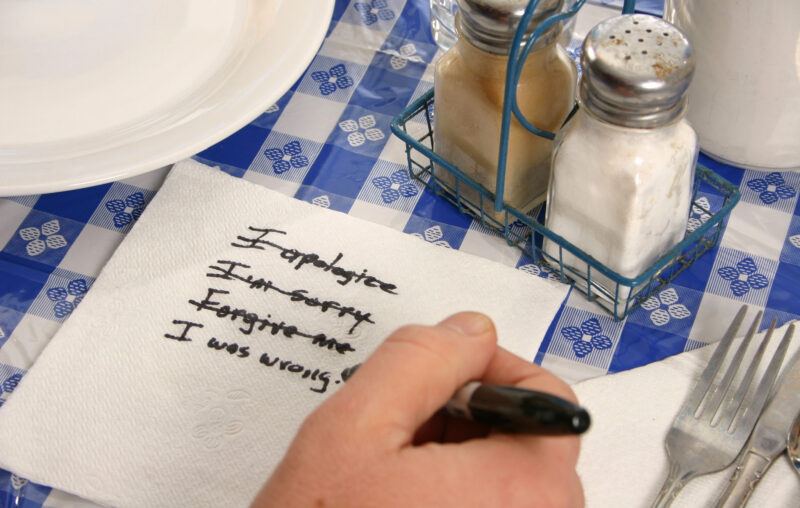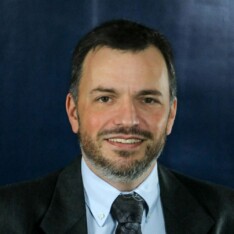Salute to the Sensible

In the 1993 movie “Tombstone,” Cowboy gang member Ike Clanton was the quintessential loud-mouthed bully when he was in the company of fellow gangsters, but he immediately blubbered for mercy the moment he faced a gun. I thought of the Clanton character when reading all the erstwhile COVID bullies, from Randi Weingarten to David French, earnestly promoting Emily Oster’s October 31 essay in The Atlantic calling for a “pandemic amnesty.”
Oster’s proposed amnesty between the “people who got it right” on COVID in the midst of so much uncertainty and those “who got it wrong” has obvious shortcomings of scope, which have been thoroughly dismantled (Don Boudreaux links to a few good ones in Cafe Hayek). The ones who got it wrong, after all, demonized the ones who got it right, disemployed them, harassed them, threw them out of restaurants and a host of other places, shut their kids out of schools, forbid their medical treatments, closed off their travel options, and cruelly prevented people from visiting loved ones in nursing homes and hospitals, or attending funerals and weddings.
The first tool they reached for was totalitarianism, and only now are they surprised they chose poorly.
There was no such conciliatory tone until it became impossible to deny what they got wrong and others got right: the terrible economic and social effects of lockdowns, deep learning loss from closing schools, the ineffectiveness of the mandated masks against this respiratory virus as with all others, the ineffectiveness of the mandated vaccines and boosters, dangerous increases in substance abuse, deadly health outcomes from canceled medical procedures and foregone health checkups, increasing deaths of despair, the growing phenomenon of non-COVID excess deaths, and also the devastating inflationary effects from massive COVID spending packages. For those reasons, Vinay Prasad, Michael P. Senger, and others have called for accountability for the harms that have been done.
Staring down the barrel of all that great wrong, the bullies became grovelers, but like Clanton, they want absolution without having to show any actual repentance, let alone offer an apology.
There’s no apology or expression of regret in Oster’s piece. In her view, getting it right “had a hefty element of luck,” completely absolving her and others’ reasoning faculties for going AWOL and hiding behind the skirts of their amygdalas, the brain’s fear center. She thus concluded with a plea to regard the COVID Clantons as mere victims of circumstance: “Let’s acknowledge that we made complicated choices in the face of deep uncertainty, and then try to work together to build back and move forward.”
No, that’s woefully insufficient. “Forgive and forget” without first admitting wrongdoing will inevitably translate into “Forget and Fall for it all again.” It’s not as if you picked the wrong paint color for the house. History will remember lockdowns and the rest of the COVID tyrannies as some of the most destructive policy experiments ever unleashed on people.
In time of great uncertainty, COVID dissent was the rational response to totalitarianism
Let’s turn our attention to those who stayed rational amid the buffeting gales of COVID panic. Let us now praise unheralded men and women who, even if they were fearful, nevertheless went about their daily lives as diligently as they could. Let’s remember how they tried to make the best of a bad situation and even worse policies. Let’s salute the sensible.
When Oster and her family were cowering on mountain hikes and shrieking at approaching children, these people were trying to work for their families. They were questioning the hasty policy responses. They asked, “Why are we closing businesses and locking people in their homes? We never did that for other pandemics.”
They asked why and wanted to know what changed when face masks were forced on people. They remember how politicians first told us not to wear them, to save them for health care workers in the coming onslaught of patients, and to remember that research showed they weren’t effective against viruses, anyway. Unconvinced, they didn’t submit, despite being ostracized and shunned; mocked for not “following the science;” forbidden entrance from some grocery stores, restaurants (once they were reopened), other businesses, even churches; told that they hated other people and wanted to kill grandmas; and were cursed and shouted at and even assaulted in public.
Something in them, however, refused to live a lie. Their consciences wouldn’t let them. So they didn’t take the easy way, because they couldn’t go along with superstition and baseless humiliation. They hoped others would take heart from their example.
Then they saw the politicians, public health officials, media members, and celebrities who pushed lockdowns and masks going out unmasked, dining, attending awards shows, enjoying sporting events, partying, going to big weddings, and behaving as normal while still preaching COVID compliance. Often, absurdly, they’d be surrounded by wait staff, servers, and handlers whose faces were still swaddled.
They remember the lockdowns and closings being justified by the terror of early computer modeling of infections. Media braced us for field hospitals once the regular beds were taken and told us to be prepared for hard choices over who gets treatment and who’s left to die. Healthcare workers coming to work and braving exposure were hailed as heroes. They watched as those predictions failed spectacularly, and then they saw that the nurses had time to record elaborate song-and-dance routines on social media to promote masking and social distancing.
(A year later, they would see some of those same hero nurses and doctors fired or forced into early retirement when they wouldn’t submit to a hastily made vaccine, knowing they’d already gained hard-earned natural immunity. But the politicians and public health officials denied natural immunity for this virus.)
They also remember that the idea behind lockdowns to “flatten the curve” started from the realization that we would all contract a COVID infection eventually, with the point being to keep the infections from all happening at once. But they noticed that since people weren’t catching the virus nearly as fast as the computer models predicted, the notion grew that contracting an infection had to be somebody’s fault for not minding all the changeable government diktats, either yours or somebody else’s. An ugly, palpable hatred brewed for COVID dissenters by those who “did everything right” but still got sick.
The more questionable the COVID policies and outcomes became, the more the rational couldn’t believe how easily so many others simply went along without question. They chose instead to stand firm as a witness to the truth, to human liberty, to normality, to rationality. “Didn’t care for others”? They were the ones trying to get kids back in schools, breadwinners back to work, and people back to normal relations with one another, rather than this crushing isolation and fear that every living soul was a mortal threat to be avoided at all cost.
Some took to the streets in peaceful protest. They were told the very act was deadly. Some were arrested, and some were even violently beaten, supposedly in the interest of keeping people safe and healthy. Then they watched violent, destructive protests occur for different reasons and heard them being excused as too important for the virus to disrupt. Cities even imposed curfews on the law-abiding to make it easier for rioters to roam about wreaking havoc.
They remember when people were told the masks were just until the vaccines were ready, and then that the vaccines were 99 percent effective. They watched with growing alarm as the publicly proclaimed effectiveness of the vaccines got ratcheted down, again and again and again. They saw the vaccines being mandated by some employers and states and then by the president, and then, incomprehensibly, the mask mandates restored. They wondered, if the ostensible public good served by vaccine mandates was immunity to the virus, why none of the politicians or public health officials behind the mandates allowed for the greater immunity conferred by recovery from a natural infection.
They witnessed proof of vaccination become a new apartheid.
Oster and her enthusiasts would have us believe they were lucky. No, they were principled. The pastors who trusted in God and kept the churches open. The tattoo artists, bar owners, speedway owners, and other “nonessential” small businessmen who went back to work in defiance of arbitrary government orders, the same orders allowing “essential” businesses next door to remain open. Epidemiologists and other scholars who refused to be cowed into acquiescence with governments’ message du jour but spoke out for known best practices for living through a pandemic, protecting the vulnerable while building herd immunity. The governors and heads of state who resisted the worldwide rush to COVID tyranny, choosing instead to stand with established science. The doctors who put their patients first, even prescribing treatments shown to work that were questioned after the fact by authorities. The civil libertarians who held firm to their tenets rather than run like emus. Public employees who refused to submit to unnecessary vaccination and challenged them in court. Lawyers who represented them despite excoriation from their peers and others. Judges who upheld the law rather than ruling out of fear and hubris. Parents who started attending school board meetings to demand their children return to classroom instruction.
They were outliers, counterculture rebels doing what they knew to be right, and hounded on every side for it. They broke curfews, gathered with friends and family, attended church, marched together, showed their faces in public, celebrated Independence Day, went to football games, hosted holiday parties, shook hands, raised glasses, hugged, danced, and played. They were the ones who upheld the normal, while the ruling classes tried to assert a “new normal.”
Where grace is called for, it’s for those whose trust in public health officials, media, politicians, and even their own doctors were betrayed. They were scared into submission, and many still bear the mental scars. But when you’re forcibly keeping lonely elderly patients from their loved ones, kicking families off planes because a two-year-old doesn’t wear a face mask properly, calling the cops on patrons and store owners, screaming at and filming people in public, self-righteously demanding denial of public services and even medical care to COVID dissenters, or debasing and humiliating schoolchildren, you should have known it was wrong.
The need for repentance
At the end of “Tombstone,” about to be shot, Ike Clanton tears off the red sash that signified his allegiance to the Cowboys. He was spared. The narrator informs us, however, that Clanton was “shot and killed two years later during an attempted robbery.” He’d gone right back to wrongdoing. He hadn’t repented.
If we are going to accomplish Oster’s “work together to build back and move forward,” it’s imperative to acknowledge and address the wrongs done that tore everything down and everyone apart. Many of those things are still being done now, in pockets across the country. Without their repentance, our pretending it never happened isn’t grace, it’s Stockholm Syndrome.










